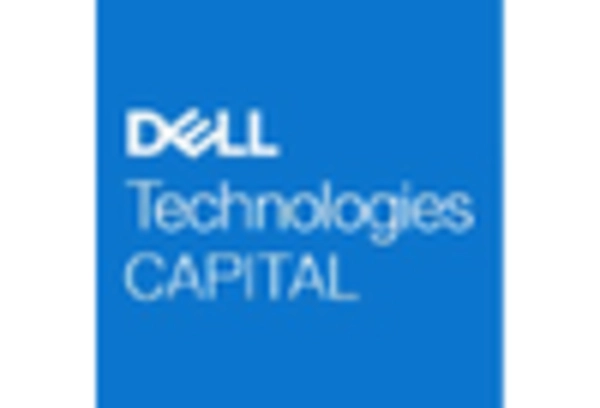Advancements in 5G Technology
The fog computing market is set to benefit from advancements in 5G technology, which promises to revolutionize connectivity and data transmission speeds. With the rollout of 5G networks, the potential for real-time data processing and analysis at the edge becomes increasingly viable. This technological evolution is expected to enhance the capabilities of fog computing solutions, enabling them to handle larger volumes of data with minimal latency. Market Research Future predict that 5G could drive a 50% increase in data traffic by 2026, creating a substantial opportunity for the fog computing market. As organizations seek to leverage the benefits of 5G, the demand for fog computing solutions that can efficiently manage and process data at the edge is likely to rise. This synergy between 5G and fog computing could lead to innovative applications across various sectors, further propelling the growth of the fog computing market.
Increased Focus on Edge Analytics
The fog computing market is witnessing a significant shift towards edge analytics, driven by the growing need for data analysis at the source. Organizations are increasingly recognizing the value of processing data closer to where it is generated, as this approach can lead to faster insights and reduced bandwidth costs. Edge analytics enables real-time decision-making, which is particularly beneficial in sectors such as retail and transportation. Recent studies suggest that the edge analytics market could reach $20 billion by 2026, indicating a robust growth trajectory. This trend is likely to bolster the fog computing market, as it provides the necessary infrastructure to support edge analytics applications. By leveraging fog computing, businesses can enhance their analytical capabilities while ensuring that data privacy and security are maintained, thus fostering greater trust in data-driven decision-making.
Expansion of Smart City Initiatives
The fog computing market is poised to gain momentum from the expansion of smart city initiatives across the United States. As urban areas increasingly adopt smart technologies to enhance infrastructure and services, the need for efficient data management and processing becomes critical. Fog computing provides a decentralized approach that allows for localized data processing, which is essential for applications such as traffic management, waste management, and public safety. Recent reports indicate that investments in smart city projects are expected to exceed $100 billion by 2025, creating a substantial opportunity for the fog computing market. This growth is likely to be driven by the need for scalable and efficient solutions that can handle the vast amounts of data generated by interconnected devices within urban environments. As a result, the fog computing market is well-positioned to support the technological backbone of these initiatives.
Growing Need for Enhanced Data Security
The fog computing market is increasingly influenced by the growing need for enhanced data security measures. As organizations become more aware of the vulnerabilities associated with centralized data storage, there is a shift towards decentralized computing solutions that fog computing offers. This approach allows for data to be processed and stored closer to the source, reducing the risk of data breaches and unauthorized access. Recent surveys indicate that nearly 70% of organizations prioritize data security in their technology investments, which is likely to drive demand for fog computing solutions. By implementing fog computing architectures, businesses can enhance their security posture while ensuring compliance with regulatory requirements. This trend underscores the importance of integrating robust security measures within the fog computing market, as organizations seek to protect sensitive information in an increasingly interconnected world.
Rising Demand for Real-Time Data Processing
The fog computing market is experiencing a notable surge in demand for real-time data processing capabilities. As industries increasingly rely on instantaneous data analysis, the need for localized computing solutions becomes paramount. This trend is particularly evident in sectors such as manufacturing and healthcare, where timely decision-making can significantly impact operational efficiency. According to recent estimates, the market for real-time data processing solutions is projected to grow at a CAGR of approximately 25% over the next five years. This growth is likely to drive investments in fog computing technologies, as organizations seek to enhance their data processing capabilities while minimizing latency. Consequently, the fog computing market is positioned to benefit from this rising demand, as it offers a robust framework for processing data closer to the source, thereby improving response times and overall system performance.

















Leave a Comment